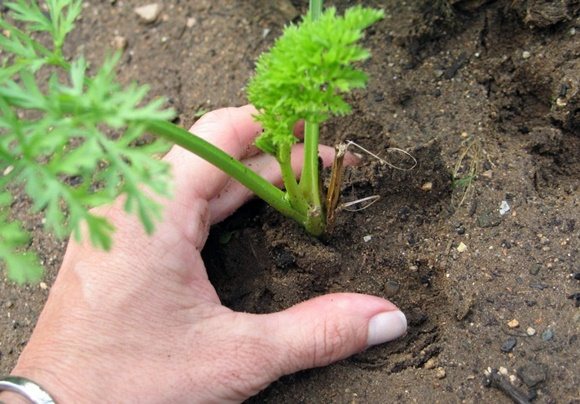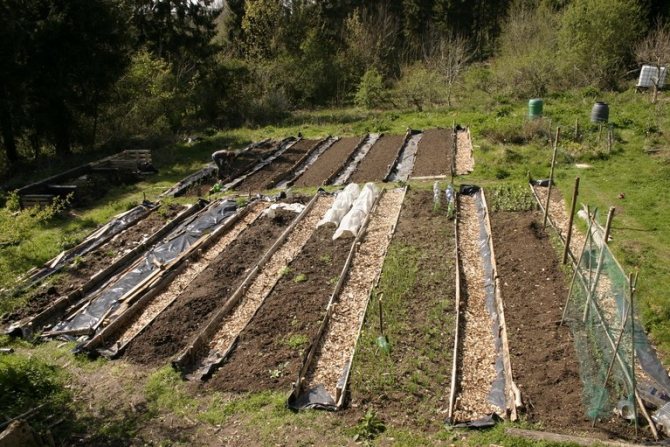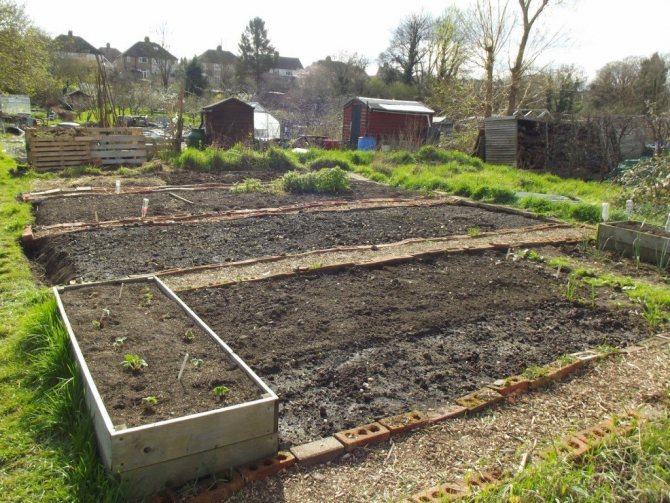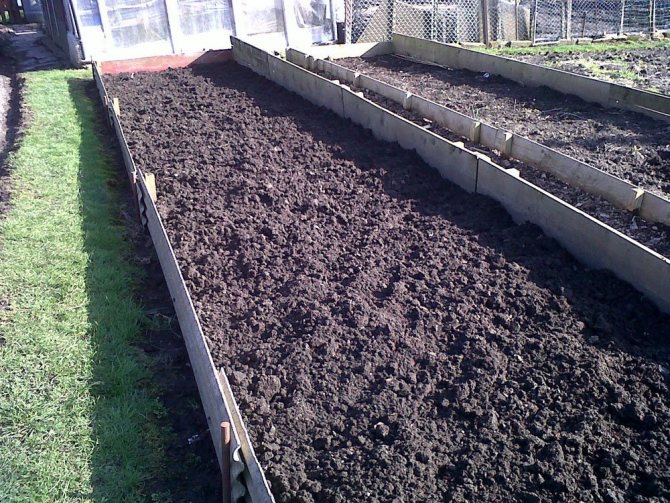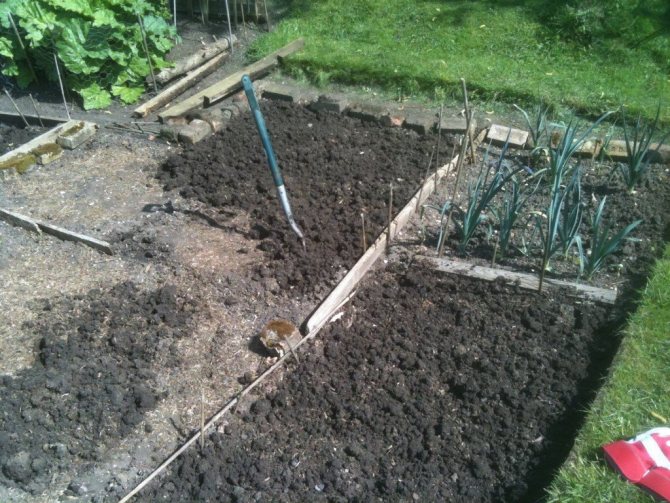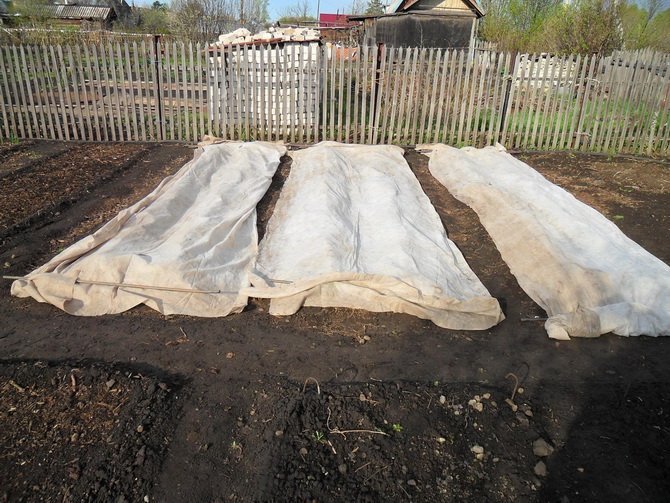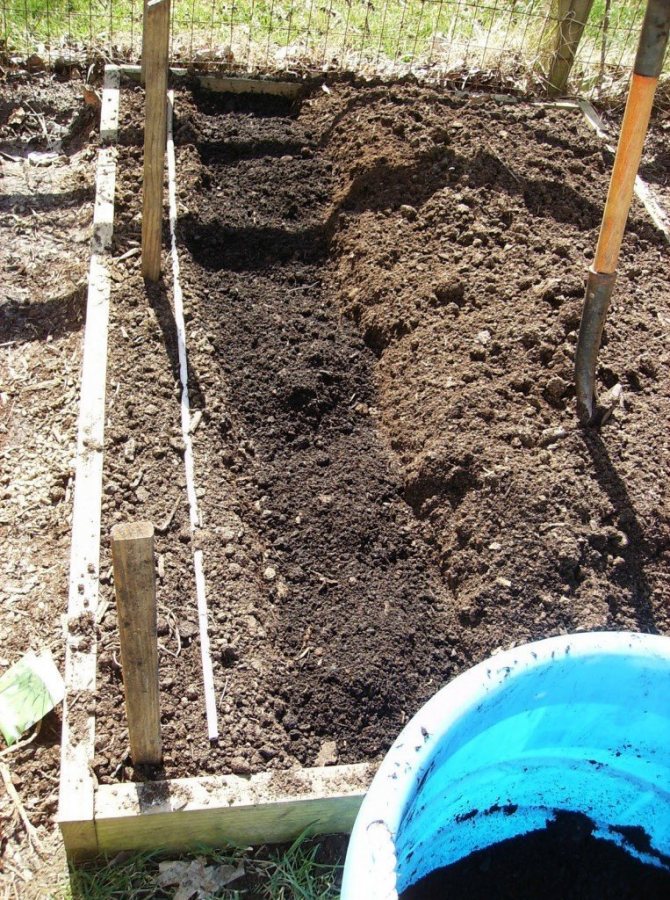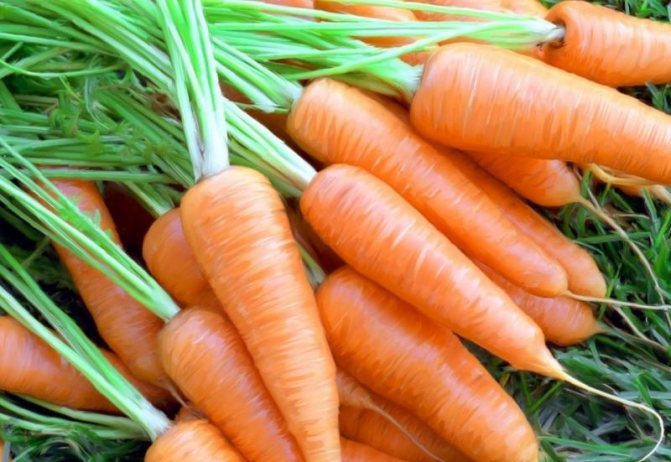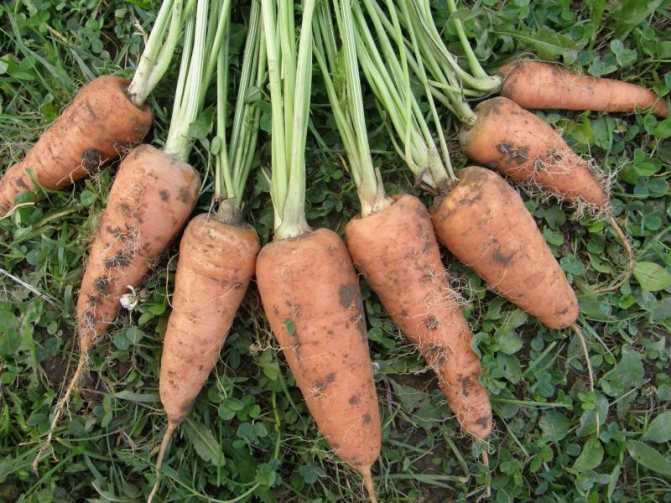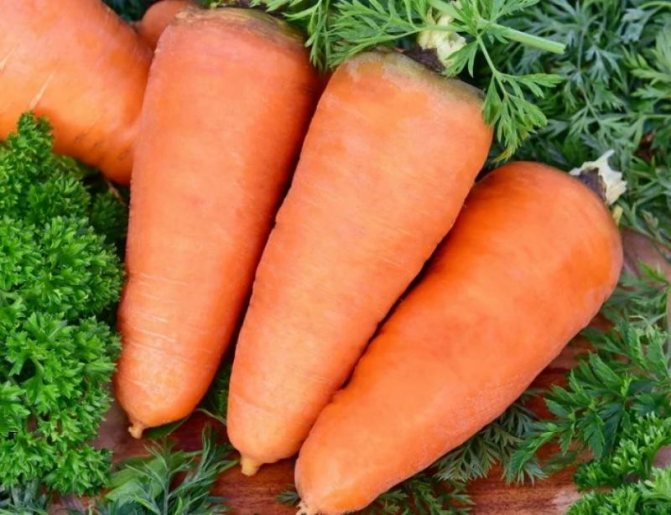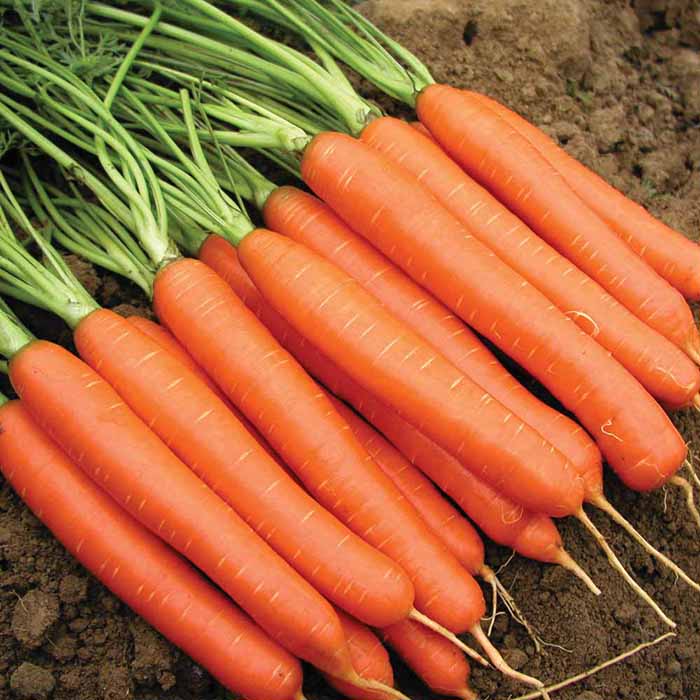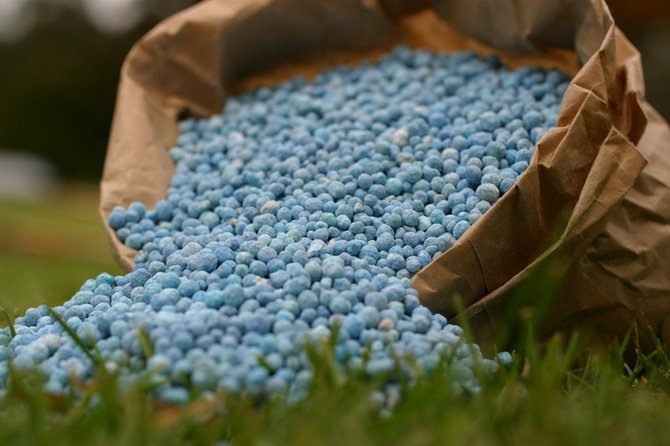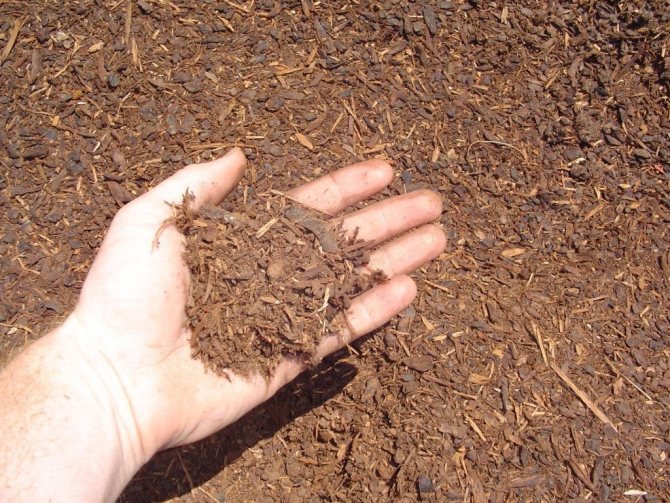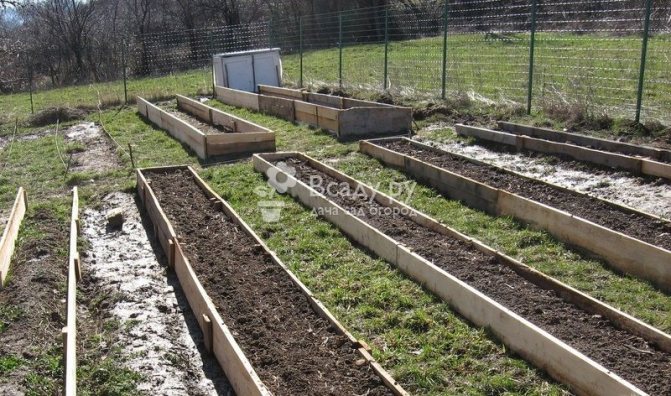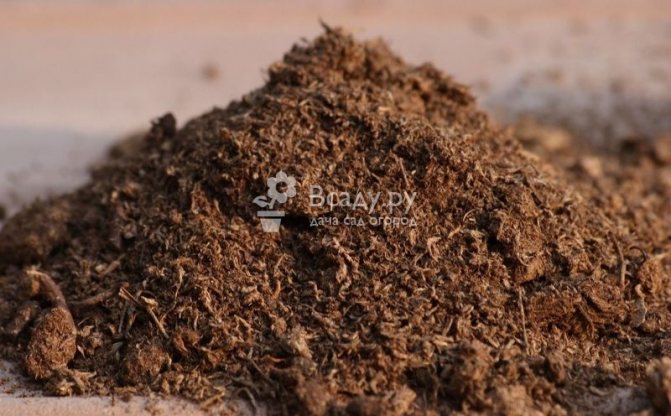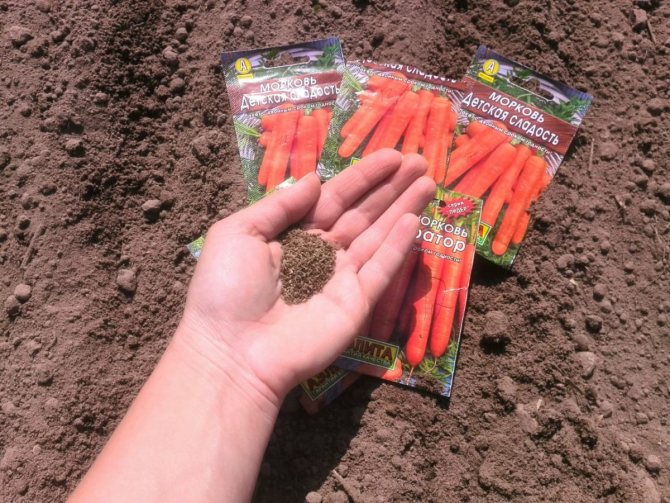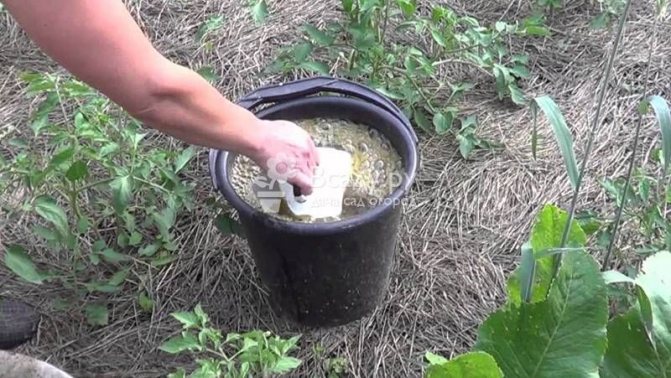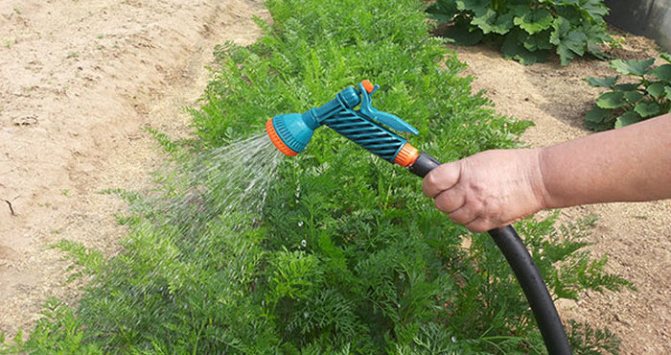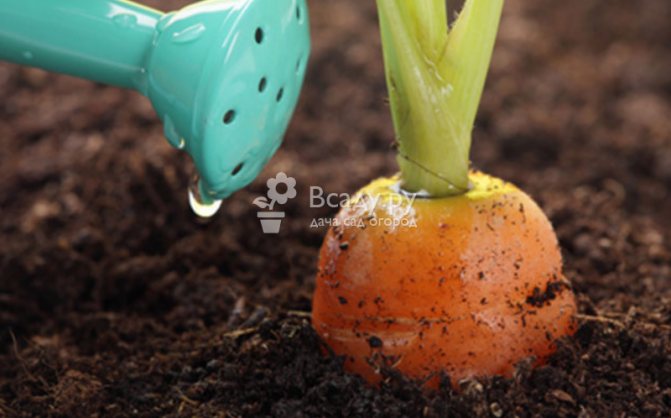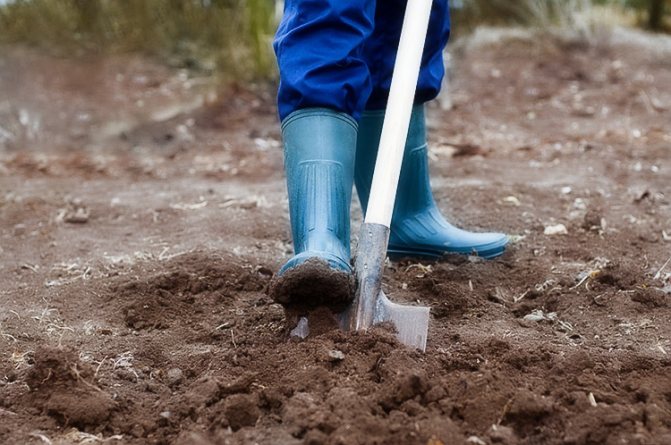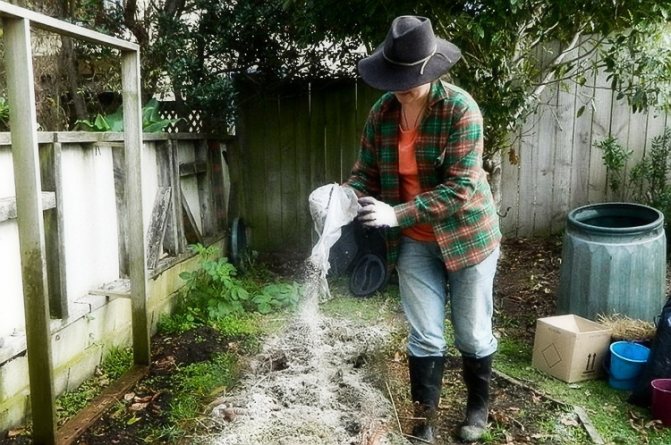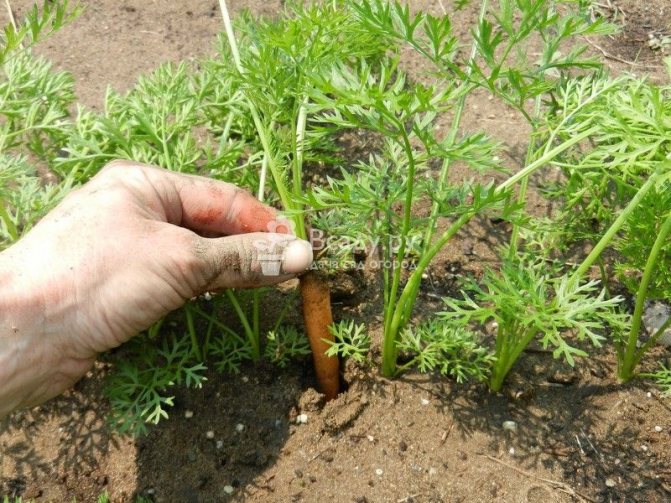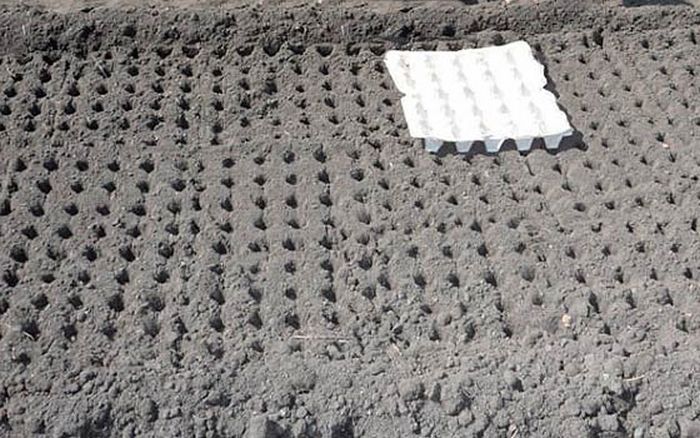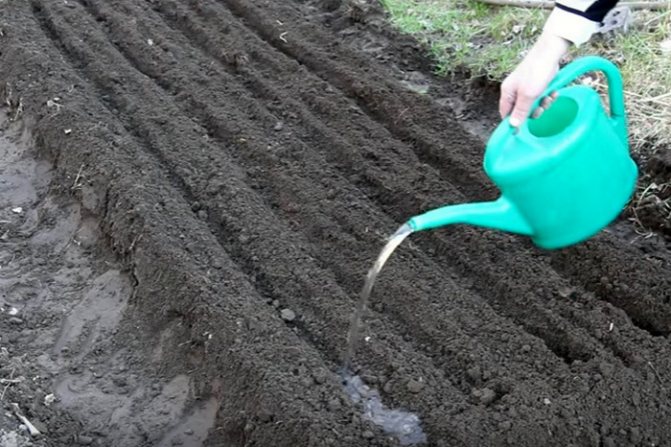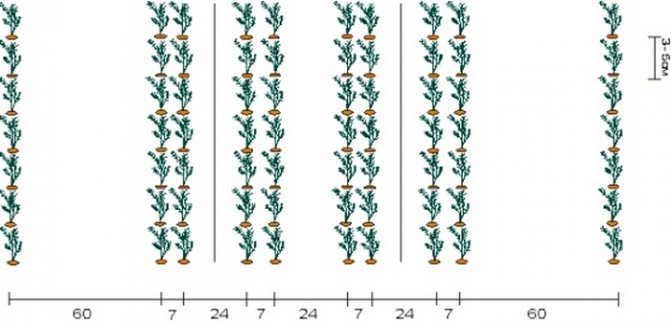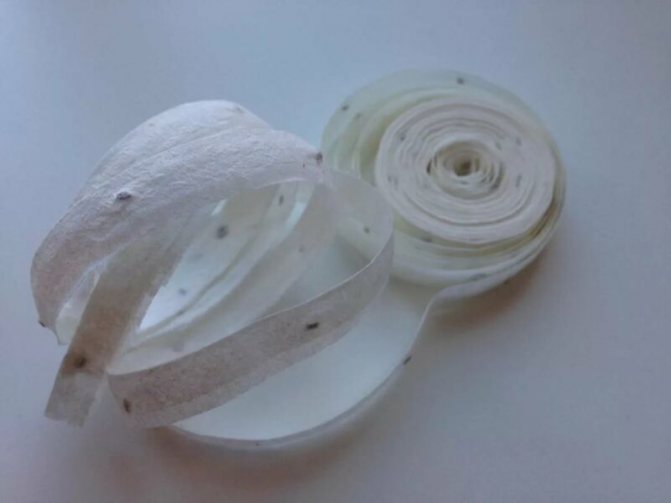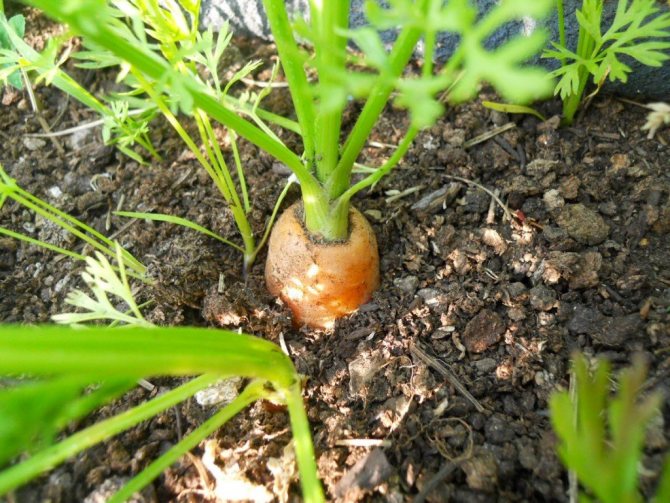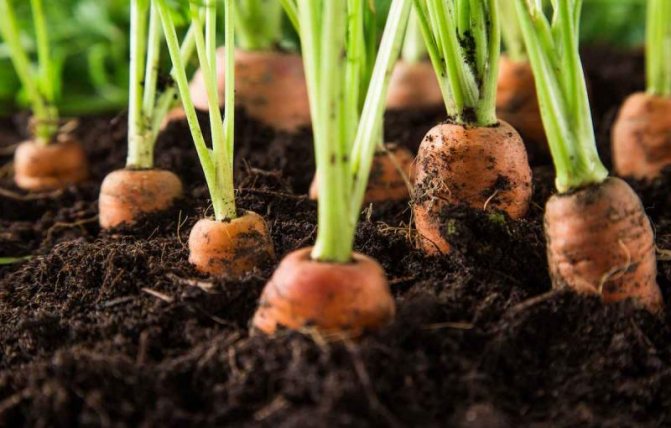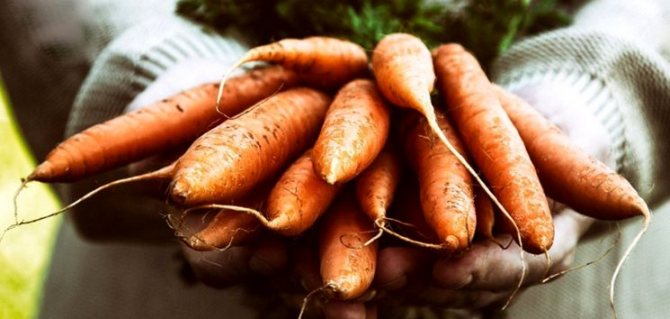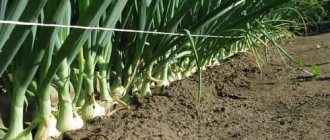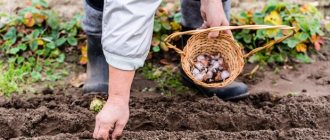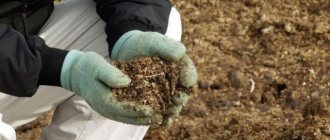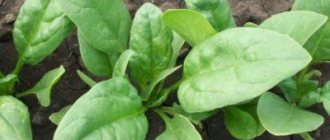Category: Garden plants
What is the value of early vegetables? The fact that they appear when you want them most. This is the reason for the popularity of sub-winter sowing of carrots - you can get them to the table 2 weeks earlier than the earliest varieties of spring carrots ripen. In addition, sowing in the winter will make spring work easier for you, freeing up a lot of time that is so lacking at the beginning of the growing season. If you have never sowed vegetables before winter, then it is better to start the first winter sowing with carrots. The goal we are pursuing in this article is to tell you in as much detail as possible about when to plant winter carrots, where to plant carrots and how to plant carrots correctly in the fall.
Dates for planting carrots before winter
Do you want to plant carrots for the winter? You need to know the optimal time for this. The main mistake that gardeners make is to sow a root crop long before the onset of cold weather.
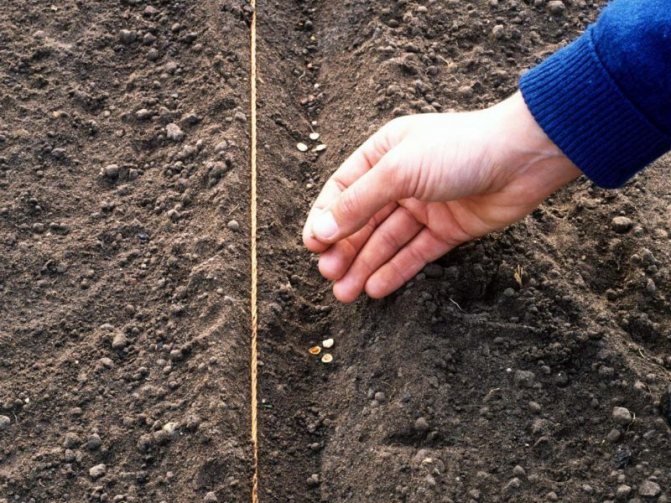
No specialist will tell you the exact dates, since the weather changes every year. The optimal timing for planting carrots is mid or late November. It is important that for several weeks the average temperature is not higher than +2 and not lower than -5 degrees.
If the mark exceeds the allowable rate, the seeds will simply germinate, and even possibly sprout. Of course, they will not withstand the winter cold, the carrots will freeze, the work will be in vain.
Care
Planting carrots before winter needs good care, otherwise the cultivation result will be unsuccessful.
If snow has not fallen before the time of sowing the seeds, sprinkle the beds with spruce branches or sawdust. After the first snowfall in winter, the site is covered with a snowdrift.
In the spring, when the thaw comes and the snow begins to melt, the snowdrift is removed, and the shelter is also removed. Metal arcs are installed on the site, a film is pulled over the crops.
Such spring care measures are mandatory and provide young shoots with protection from spring frosts.
What varieties are suitable for winter sowing
For winter sowing of carrots, seeds are ideal, which are sold in specialized stores. You need to choose early and frost-resistant varieties. Otherwise, the seedlings will simply die.
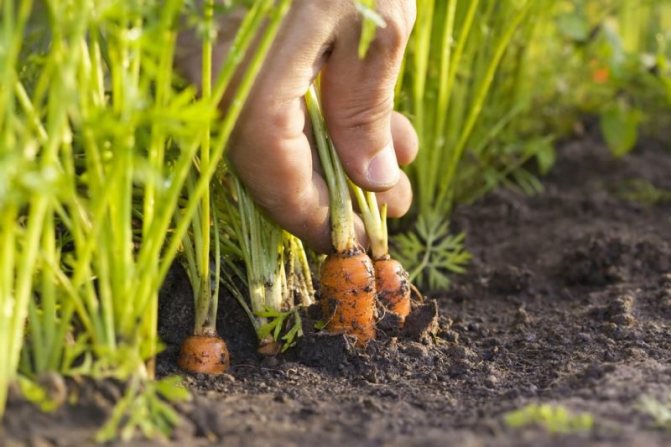

So, which varieties will be the most optimal:
- "Nantes 4". Experts love this variety, it takes root well in any soil, even on heavy soils. Root crops sprout quickly enough as soon as the first sun warms up. The carrots are tasty, juicy, dense. The advantage of the variety is its frost resistance. The percentage of seed death is minimal.
- "Vitamin 6". Differs in high productivity, unpretentious care. The root vegetables are tasty, bright orange in color, without greenery and unpleasant bitterness. Can be sown in any soil. Plus in the increased content of keratin.
- "Losinoostrovskaya 13". The downside is that the roots are not very large. But at the same time, the taste of carrots is excellent. Stored well, resistant to blooming, mold, decay.
- "NIIOH 36". Perhaps the most frost-resistant variety. Suitable for northern regions of Russia, where severe, frosty winters.
- "Pretty girl". Carrots are very juicy, ideal for making juices and salads.
Remember that the weather is not always stable. Therefore, some of the seeds may die, not survive the winter frosts.
Choosing a landing site
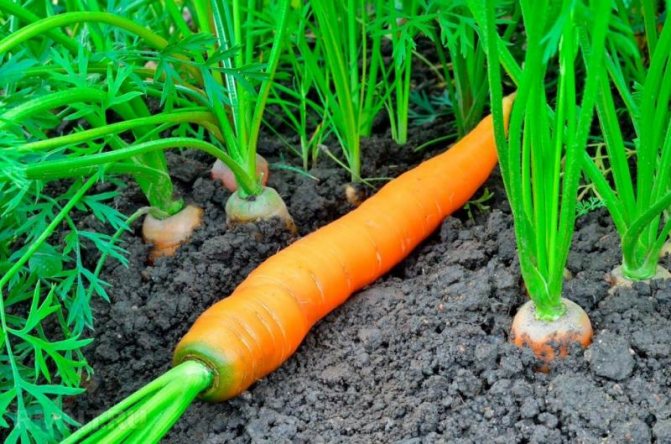

The key to a full-fledged growth of culture and a rich harvest is not only compliance with the timing of sowing carrots in open ground in spring, but also the right place for the beds.
Consider these recommendations when choosing a suitable area for your garden:
- The area for the beds should be flat, even without a minimum slope.
- Necessarily good illumination and sufficient solar heat. If there is a shade from the house or shrubs and trees growing near, the carrots will grow very weakly, the vegetables as a result will not correspond to the expected number and size.
- The soil should be neutral, never acidic. Otherwise, the abundance of acid will affect the taste of root crops, you will not wait for sweets from them. As for density, give preference to loose soil. In too hard soil, root crops turn out to be crooked.
Important! Do not forget about the rules of culture circulation:
- Carrots grow well in spring on the land where last year you grew cabbage, zucchini, tomatoes, garlic, onions, potatoes or cucumbers.
- Plots after last year's cultivation of fennel, parsnips, caraway seeds, parsley, beans, dill and carrots themselves are categorically not suitable.
After what culture can carrots be planted
After the end of the summer season, as a rule, there are no garden crops left in the summer cottage. The soil can be used to plant carrots in the fall before winter. But in order for the seeds to take root better and give a crop, it is necessary to choose the right places for planting.
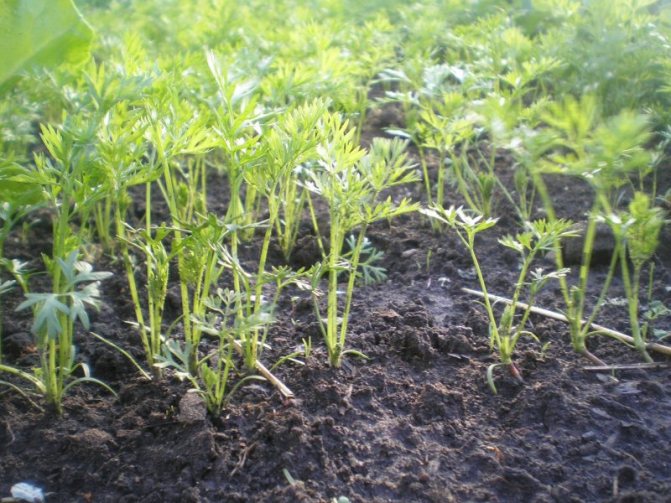

First of all, you need to pay attention to what crops were grown in the soil before. The soil is good after cucumbers, tomatoes, pumpkins, zucchini, onions, potatoes and cabbage. After legumes, carrots are not grown. These crops very much deplete the soil, take away all the vitamins and minerals.
Often novice gardeners make a big mistake: they plant seeds in the place where carrots have already grown in the summer. Remember, this should never be done. It is possible to plant this culture in the same soil no earlier than after 4 years.
But if the soil was fertilized (manure or humus was added), the period is reduced to 1 year.
Fertilizers for carrots - be careful
At the same time, while digging up the soil, fertilizers are applied. In this case, fresh manure is not suitable, since after its application, carrots can be sown in this place only after two years. Otherwise, the carrot tops will turn out to be high and thick, but the roots are gnarled and branched.
Fertilizers for carrots are prepared as follows: one square meter of the garden requires
- 2-4 kilograms of humus (one fourth of a bucket)
- A tablespoon of superphosphate
- Half a tablespoon of potassium salt
If the soil is too acidic, neutralize it by adding wood ash. Poor soils should be additionally fed with nitrogen fertilizers: an incomplete tablespoon per square meter of soil. It makes no sense to exceed the indicated dosage of mineral fertilizers: this will not affect the yield in any way. In heavy, clayey soil, sand or semi-rotten sawdust should be added when digging. Fresh sawdust and other undecomposed components of organic nature cannot be introduced into the soil: the plant begins to suffer more from carrot flies, and root crops lose their presentation.
Soil preparation before planting
In order to harvest a rich harvest of carrots by the end of spring and early summer, you need to properly prepare the soil before planting.
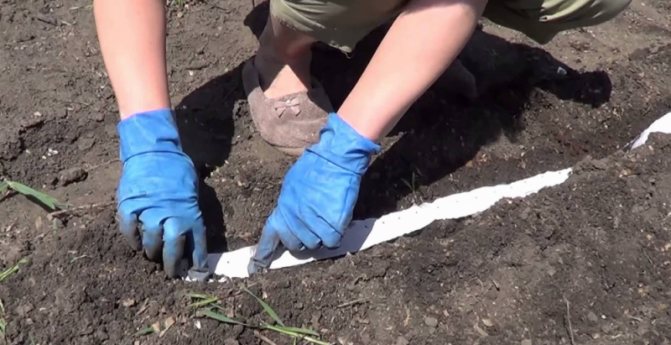

Gardening tips are as follows:
- after summer, dig up the land on the site thoroughly to remove excess weeds;
- if the soil is acidic, add mineral fertilizers and always ash. If this is not done, the carrot will grow, but its shape will be irregular, twisted;
- make holes in the garden. Remember that carrot tops grow rather quickly, so the distance between future seedlings should be at least 20 cm;
- cover the prepared wells with foil.
If there is no time to fertilize the soil with mineral components, you can do this with green manure. Sow the area with mustard a few months before the planned sowing of carrots. The seeds take root quickly and well, do not require watering and maintenance.
Dig up the area a month after the shoots have appeared. This method allows not only to fertilize the soil well, but also to rid it of pests.
Carrot fly control
You can fight the main enemy of the vegetable - the carrot fly by different methods, but the most harmless and proven are folk remedies.
These include:
- wood ash;
- sagebrush;
- tobacco dust;
- pepper;
- mustard;
- tomato tops.
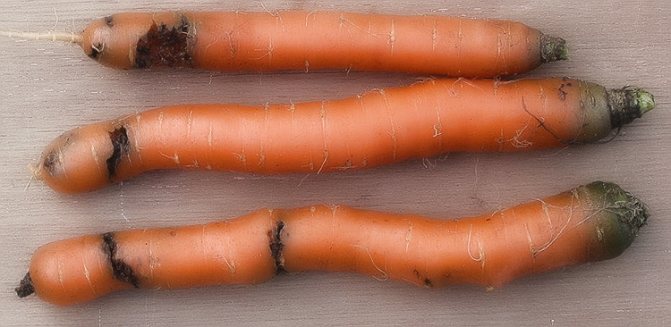

Ash, mustard, pepper or tobacco dust in small quantities is sprayed over the tops with a gauze bag or other method.
A bucket filled with wormwood is poured with boiling water, insisted. Add 25 liters of water to the resulting infusion and water the plant.
Tomato tops in the amount of 4 kg are boiled for up to 5 hours in 10 liters of water, thirty liters of cold water, liquid soap are added and the tops are sprayed.
Marigolds planted nearby will help scare off the carrot fly.
How to properly plant carrots in the fall
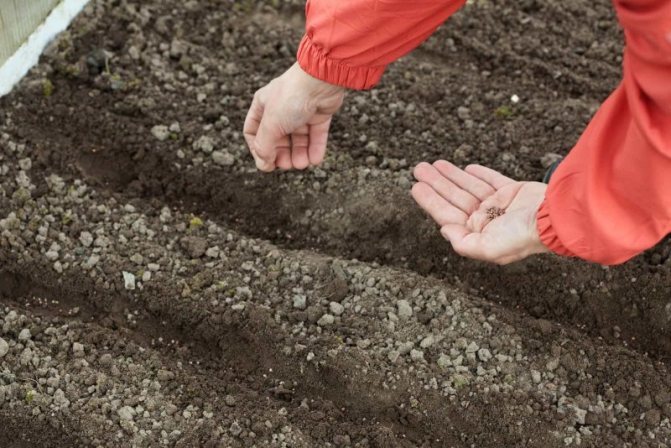

Sowing carrot seeds is carried out as follows:
- Make small holes in advance. They should not be too deep (up to 3 cm).
- Sow carrots.
- Prepare a warm, not wet soil, sprinkle it over the seeds after planting.
- Put peat on top of the sowing; humus is also suitable. Height approx. 2-3 cm.
- Compact the soil a little with a shovel, but do not compact it too much.
Gardeners give the following tips:
- seeds are never soaked before winter planting. If this is done, they will simply rot;
- if finances permit, it is better to purchase a special seeder. It is convenient to handle, sowing is much faster and easier;
- as soon as the snow melts, the area with the seedlings should be covered with a film to create a greenhouse effect.
These simple rules will help you grow an excellent harvest of carrots.
The right soil and bed for carrots
For the autumn planting of carrots, you need to prepare an additional "portion" of soil, which we will sprinkle the seeds directly at the time of sowing, it must be dry and crumbly.
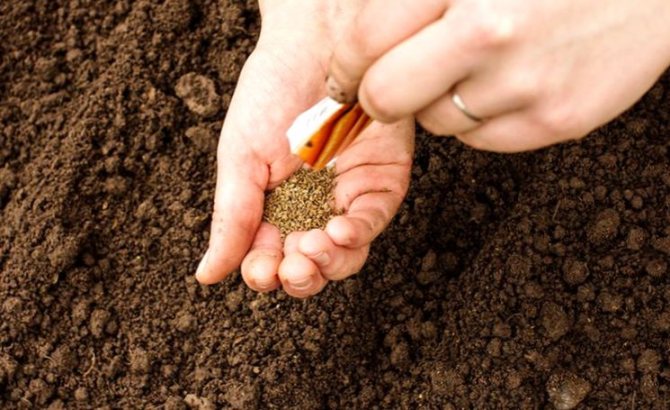

So we will make it in advance by sifting it through a large sieve and packing it in a bag or box, put it under a canopy to avoid getting wet. This soil can also be mixed with sand or peat.
The furrows for planting winter carrots should be slightly deeper than those for spring sowing.
Ideally, start preparing the garden for the autumn sowing of carrots at the very beginning of autumn, so that by October the soil has subsided enough, for this, grooves with a depth of 2-4 centimeters are formed in the dug row, keeping a distance of 15-20 centimeters between them. And we leave the bed before sowing.
Care for carrots after planting in the fall
The seedlings do not need special care. The only thing that needs to be done is to warm the soil a little.
If the winter is not snowy, be sure to cover the area with needles. After the snow has fallen, make small drifts in the beds.
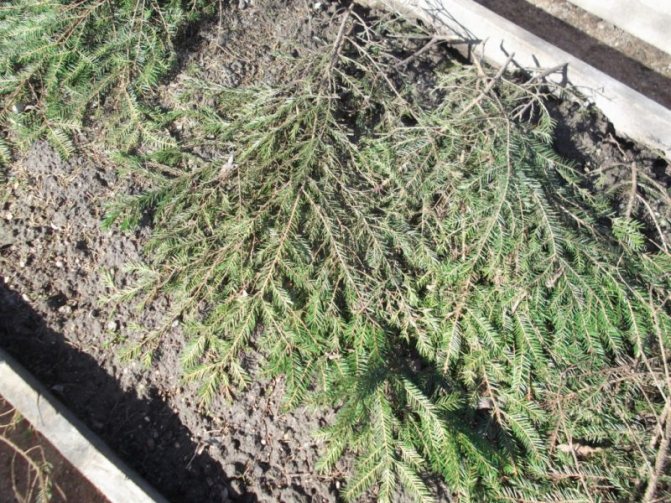

When the first warm days appear, remove the spruce branches. Be sure to make a frame of metal rods, and stretch the polyethylene. This will help the carrot seeds to sprout faster.
Preparing seeds for planting
It is known that the future harvest depends on the quality of the seeds. To determine germination, calibration is performed.
A saline solution is made, consisting of 1 liter of water and half a glass of salt. Carrot seeds are immersed in it. Empty, unusable instances pop up in the next few minutes. The culled seeds are thrown away, the rest are dried.
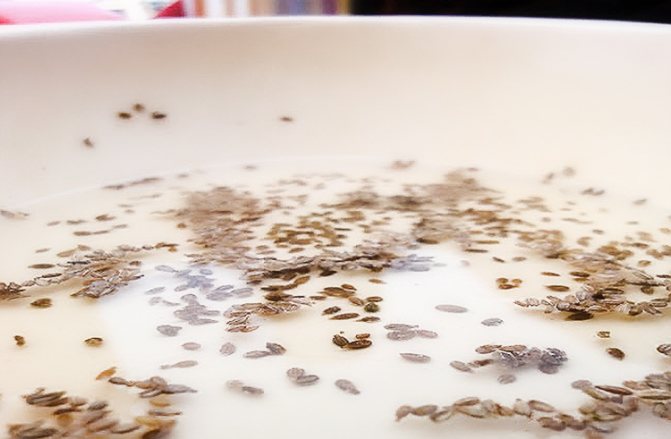

This completes the processing.Unlike planting material intended for use in the spring, for planting before winter, you do not need to soak and harden the seeds. And also they do not need disinfection. This will happen naturally in the soil.
For a more even distribution along the groove, they are mixed with sand, glued to paper, or used in granules.
In the fall, 15-25% more seeds are required than in the spring.
Features of landing in the Moscow region, Siberia and the Urals
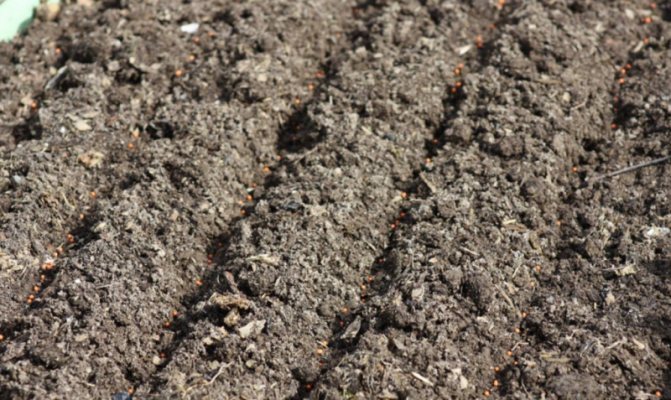

Gardeners should know that each region of Russia has its own nuances of planting root crops for the winter:
- Moscow region. It is better to plant carrots in late October - early November. At this time, the region is already experiencing cool, stable weather. No heat is observed. The peculiarity of sowing in the depth of the holes (not less than 5 cm).
- Ural. The terms are the same. But this region experiences fierce winters with severe frosts. Therefore, do not forget to cover the area with needles.
- Siberia. You can plant carrots from the beginning of October. It is important to choose the right site for sowing. It is better that it is located on a hill. In this case, the snow will melt much faster, the carrots will be early enough.
Many summer residents prefer to plant carrots for the winter. Already in late spring - early summer, you can harvest young carrots, rich in vitamins and microelements. Our tips will help you grow a delicious root vegetable with a minimum of effort.
Recommendations
To plant carrot seeds in the fall and grow a good harvest by spring, it is worth considering several important nuances:
- The tops of this plant lures the carrot fly, a pest that damages the crop of root crops, so this crop should be grown together with plants that scare off the parasite with their aroma. Often, crops of crops alternate with crops of onions and garlic.
- For winter sowing, only high-quality and proven seed with a valid expiration date is used.
- To plant this vegetable in the fall, you must try to maintain the sowing time, otherwise in the spring you will have to be left without a crop.
- It is important to carry out not only the correct podzimny sowing of carrots, but also to provide the plantings with timely care in the spring: regularly weeding, loosening the soil and watering.
Watering
Immediately after planting, we spill our bed with hot water, then Energen.
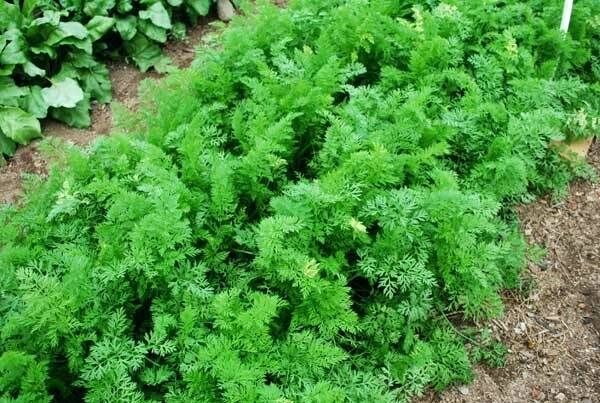

To keep the roots even, we water regularly and moderately (in the morning or in the evening), if we are late with watering (this sometimes happens), first we will pour a small rate (up to 3 liters of water per 1 sq. M), in two days we increase to 10 liters per sq.m.
Water only in the first stage of growth (until the second thinning)
Further growth occurs without watering, because excess moisture can lead to cracking of the root crop.
Video on how to sow carrot seeds in the ground without further thinning
But if you do not have seeds in gel granules, and there is also no special device for sowing, then you can make it yourself. All you need is a small jar with a lid and a thick needle. Well, you also need fire to heat the needle.
In a couple of minutes, you can make a comfortable planting device yourself. Such a clever mechanism can be further used for other seeds, for example, for salad, parsley. And if you make more holes, then for the radish.
The video also shows how to use the egg rack to form a neat, even bed. Thanks to her, the roots will grow at an equal required distance from each other and there will be no planting density. After all, the seeds of carrots are very small, and if you sow them just like that, then you cannot do without thinning.
And this can lead to trauma to the roots of the abandoned plant. As a result, the root crop can grow crooked and gnarled.
The best varieties of carrots for open ground in central Russia
There are many varieties of carrots and are grown everywhere, but nevertheless, for planting, we choose those varieties that correspond to our climate and storage conditions in winter.
By the timing of ripening, root crops are divided into groups:
early maturing - 85-100 days
mid-season - 105 -120 days
late ripening - 125 days
This is the period from germination to harvest.
When choosing a variety for planting, we take into account the ripening time, if for food in the summer we plant early ones, and for storage medium and late varieties.
Nantes — juicy and tasty. Suitable for dense soil. The length of the roots is 15 cm with a blunt tip. You can sow before winter. The variety is early ripening, suitable for planting in early spring and late autumn. The pulp is bright. Keeping quality is satisfactory.
Losinoostrovskaya — delicate taste, juicy. Recommended for baby and dietetic food. Mid-season carrots, good storage. In terms of beta carotene content, it surpasses all others.
Shantane-2461 — truncated-conical roots. High-yielding, mid-season variety.
Olympia- late-ripening variety. A vegetable of a beautiful, cylindrical shape, intense orange, up to 15 cm long.
Vitamin - mid-season variety. Very tasty root vegetables and excellent storage.
Necessary conditions for the autumn sowing of carrots
To sow carrots in winter and hope for success, you need to choose the right time. The most common mistake that vegetable growers often make is to sow before the optimal time.
If the weather was the same from year to year for any particular region, then it would be easy to determine the sowing date and carry out the work at that very moment. Therefore, there is no exact sowing date at all times, and in order to determine it, it is necessary to monitor the weather forecast annually in the fall.
The approximate period for sowing carrots is the time period from November 12 to 28, when the temperature over the past 2 weeks has been in the range from +2 to -5 degrees. Sowing is carried out in slightly frozen, hardened and cold soil.
It is absolutely unacceptable to sow seeds in warmer weather, when the thermometer shows +6 degrees or more.
If you make a mistake and still sow in advance, when the favorable temperature for the procedure has not yet been established, the result will be disastrous. The seed will begin to germinate once it is in moist and warm soil. These young seedlings will live no more than 2 weeks until frost hits.
The harvest
Early ripe varieties already in July look like full-fledged carrots. You can use it for food, but after collecting such a crop it will not lie for a long time. The same is true for August carrots. For good storage, you need to harvest in September, before the fall rains. The weather is still warm, sunny, and the land is dry.
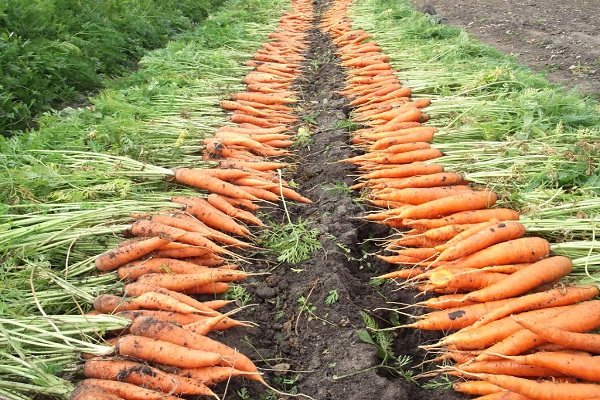

From sandy soils, the fruits are pulled out with ease by hands, from dense soils - you have to dig it out with a shovel. If the fruit has been broken or damaged, it should be eaten as early as possible, before it wilts and begins to grow rotten. Such carrots cannot be stored with the rest of the row, otherwise the entire crop will be spoiled. The tops are cut right at the head. After the fruits are dried for several days.
To increase the storage period, it will not be superfluous to sprinkle the fruits with sand, dry moss, onion husks, chalk inside each box. The free-flowing component will relieve the carrots, and from the absence of contact, it will not be subject to rot.
If the air temperature in the cellar is not higher than +5, there is no threat of germination.
You can also improve storage with a clay shell. The dry clay is dissolved in water to form a mud-like mixture. The carrots are dipped in turn, then allowed to dry. After complete drying, they are removed to the basement. In this state, it can be stored for a very long time and not deteriorate at all.
Another way is to store carrots in trash bags. Washed and dried fruits are placed in plastic bags without tying at the top.It makes sense to store it this way if the humidity in the basement is low.
As an option for longer storage, potassium permanganate treatment is used. The entire harvest of piles is immersed in a manganese solution for an hour or two. Then you need to take everything out and dry. This treatment protects against fungus.
How to prepare the soil for sowing?
Spring days delight us with their warmth and sunshine, the snow is rapidly melting, saturating the earth with moisture. So the time has come to prepare the soil for new plantings.
First of all, every gardener or gardener must understand which soil is best to choose for planting carrots. Long-term observations have shown that any carrot species is very picky about the quality of the selected soil. It cannot be mixed with solid elements such as stones or rubble, various non-natural debris or old, hard roots.
You can check the acidity level, this can be done in various ways, any can be found out and purchased in garden stores. Carrots do not like sour soil, you can extinguish it with a little ash.
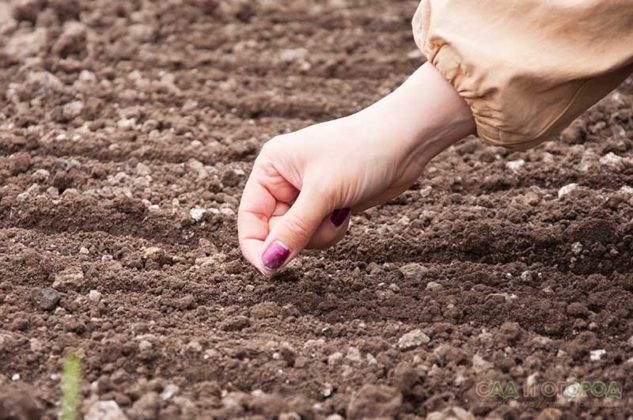

In places of clay soil or, in central Russia, especially, sand is added to black soil to give it a softer and more airy state. Sandy soils must, on the contrary, be saturated with humus or potato peelings. But don't overdo it, carrots love soft soil.
To grow strong, even and large carrots, you should plant the seeds in loose soil. Then it will easily grow in it.
Try to record the location of the planted crops in order to know where to form new plantings next year. For example, carrots love the ground after cabbage heads, zucchini, tomatoes, garlic or onions, potatoes or cucumbers.
Several moments that do not contribute to obtaining a rich harvest on the site:
- Choosing a location with a minimum amount of sunlight. The shadow has never been a helper of a good harvest.
- Places on the slopes.
- Not well-groomed gardens, completely overgrown with weeds.
You can't! Plant carrot seeds after crops such as sunflower, green tobacco, parsley root, legumes, and dill.
What to do in the spring?
The lapnik is removed as soon as the snow melts from it. This must be done, otherwise the bottom layer will melt more slowly. This will affect the ripening period of the carrots. At the same time, you can remove some of the snow from the garden, if there is a lot of it. So it will melt faster. In the spring, when the first shoots appear, we begin to remove weeds and loosen the soil as it dries.
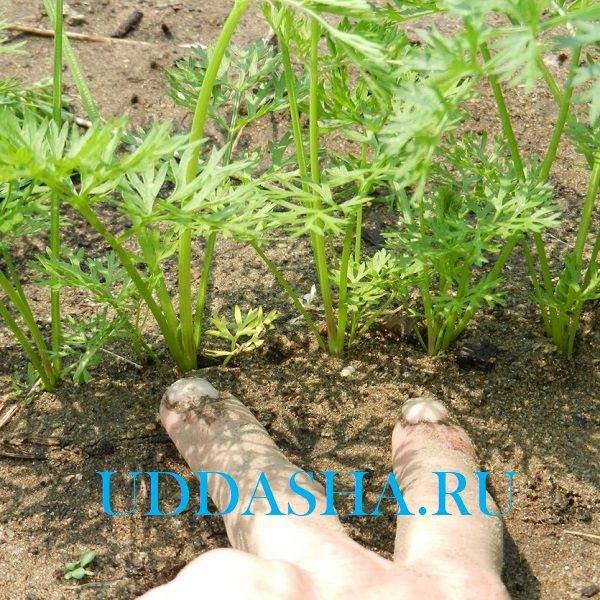

Weeding is a must. If you plant a salad or radish between the rows, then the procedure is required much less often. At the same time, they are fighting pests and preventing the emergence of insects and pathogenic bacteria. If during planting a special tool for sowing carrot seeds was not used (you can set a step on it), then young plants need to be thinned out twice. The first time the real leaves appear. Thin it out so that there is 2 cm between the carrots. This distance is increased to 4 cm during the second procedure - after about 20-25 days.
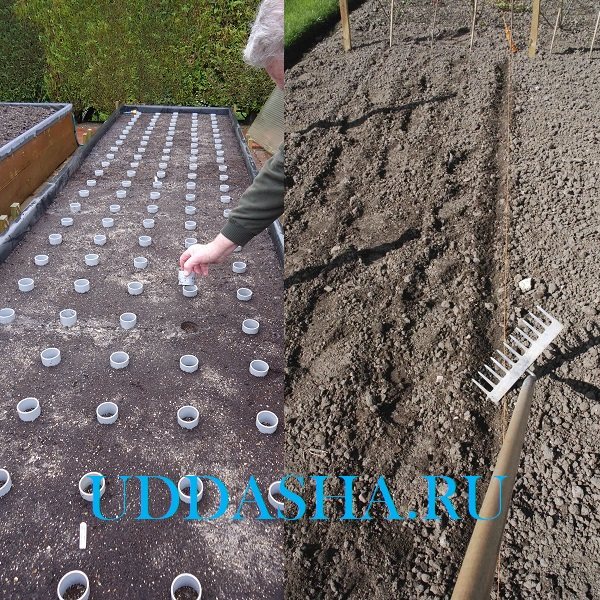

Otherwise, carrots are a plant that is undemanding to care for. The only drawback of podzimney planting is that it is not stored for a long time. But, at the very beginning of summer, delicious nutritious fruits will appear in the garden. They are ideal for fresh juices or salads.
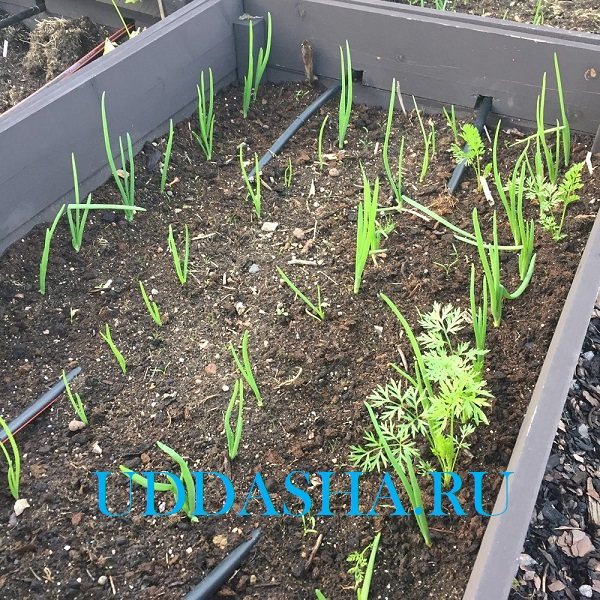

Thinning, loosening, hilling
To obtain even and large root crops, it is imperative to adhere to the rules of hilling and thinning. Initially, you need to timely loosen the beds with carrots, in order to saturate it, you need the amount of oxygen. You need to resort to loosening the soil after watering or rain. Actions must be extremely careful, since the weakened roots at this moment are close to the surface, therefore, it is easy to hook and damage them.Thinning must also be done with care. You need to start it after the appearance of the strengthened leaves of the tops. If the thinning is illiterate, the roots that are in the ground will be injured and the carrots will grow "horned".
Mulching a vegetable
How to grow large carrots and at the same time knowingly exclude the risk of overdrying the soil, the danger of pests, and also significantly reduce the number of weeding and loosening? For this, there is a technology for covering the soil with mulch, and the technique itself is called "mulching".
How to mulch a carrot bed? The most common way to mulch a garden bed is to cover the space between the rows of planted vegetables with hay, straw chops, or sawdust. The latter option is preferable, since the shelter with sawdust retains moisture longer and is a more reliable shield against the invasion of cabbage and other pests.
Sawdust covering the soil has another important advantage over grass mat - weeds do not germinate through it, while the dried grass itself may by default have mature and ready-to-germinate seeds that will grow on contact with moisture. Small chips have the same properties, along with sawdust.
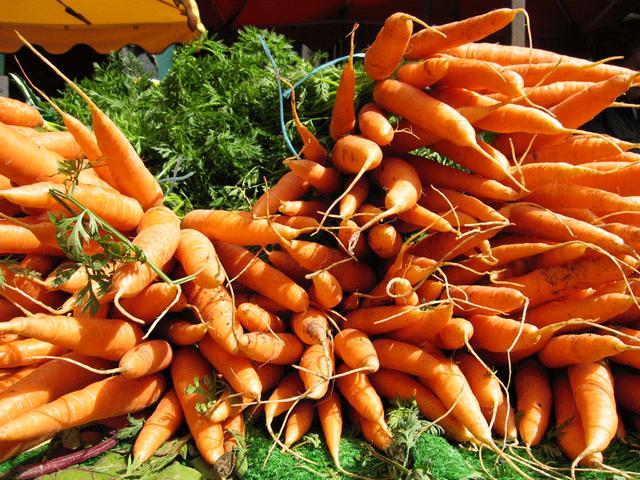

It is recommended to mulch carrots when the outer part of the plant reaches 14-16 cm, and the vegetable itself will be about 7-8 cm in diameter at the widest part of the root. Can late varieties be mulched? It is not only possible, but also necessary, since the shelter retains the temperature for a long time, which it receives from the sun in the daytime, and as a result, the roots are juicy and not cracked.
On the forums, there are often complaints like the following: "I mulch a vegetable crop according to all the rules, but the vegetable withers, the tops fall, and the result is a horned or otherwise ugly carrot that has no sweetness." An important condition before the procedure is drying of the material. No matter what mulching is done, the cover should not flush and thus serve as a habitat for the reproduction of harmful microorganisms. And the secret of withering, falling tops is rotting of the root, to which oxygen does not reach through the dense crust of raw mulch. These are all the secrets of proper mulching.
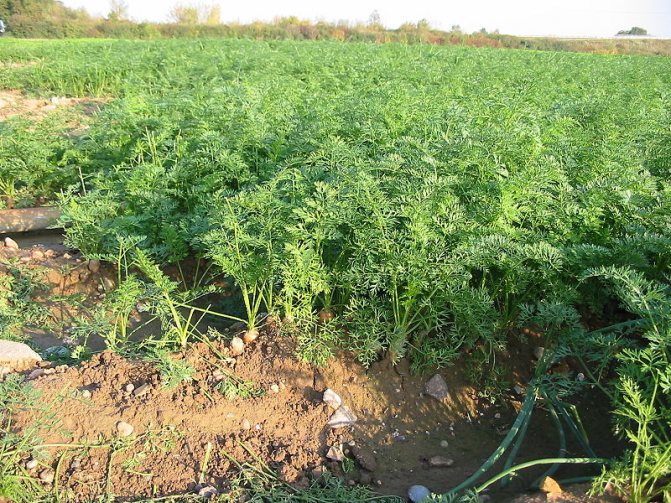

Typical mistakes
Let's name the most common mistakes gardeners make that answer the most frequent complaints about why carrots don't grow:
- the seeds were planted without preliminary soaking or in insufficiently heated soil (the norm is 7-9 C);
- too deep sowing or improper formation of the groove (it is supposed to deepen the groove by 2 cm, then tamp its bottom with the edge of the palm or the handle of a hoe);
- no watering before or after planting, or watering with cold water;
- abundant watering of the soil during the time until the sprouts are hatched out of the soil (until the green brush of the sprouted plants appears on the garden bed, you cannot water the garden);
- frequent watering with a small amount of water, in which moisture does not penetrate deeply enough;
Why does carrot grow poorly? Perhaps due to the lack of a feeding element throughout the development of the plant. In not rested or depleted soil, vegetables will be thin, pale, covered with white hairs. A lack of potassium will immediately affect the density of the root - it will become woody, and the lack of phosphorus will affect the taste - the carrot will become tasteless or even sour.
Stratification and germination
Novice summer residents must necessarily be guided by the basic rules of planting and caring for carrots. If you neglect them, you can grow carrots, which are suitable only for feeding animals.
Initially, you need to take into account the advice of experienced summer residents, who recommend preparing seeds before planting them in the ground. First of all, you need to find out when the harvesting of the planting material was made. Often, gardeners acquire seeds of large sizes or plant "home" ones, those that were harvested from the last harvest.When ready-made seeds are used, before planting them, you need to familiarize yourself with the expiration date indicated on the package. Hope for a generous harvest is possible if the age of the seeds at the time of sowing is no more than 3-4 years. Then you need to start preparing the seeds to increase their germination.
We huddle correctly
Often, even from experienced gardeners, you can hear that carrots are not hilled. However, if you are not too lazy to do this painstaking work at least three times during the development of the vegetable, you can secure the future harvest from three misfortunes at once:
- from damage to the open part of the root by a carrot fly, which likes to lay eggs at the base of the vegetable;
- from the protrusion of greening at the top of the rhizome;
- from exposure to direct sunlight, which leave burns on the root surface near the tops.
Since it is recommended to huddle the root crop three times, the procedures are tied to certain phases: on the 5th, 7th and 10th leaves released.
